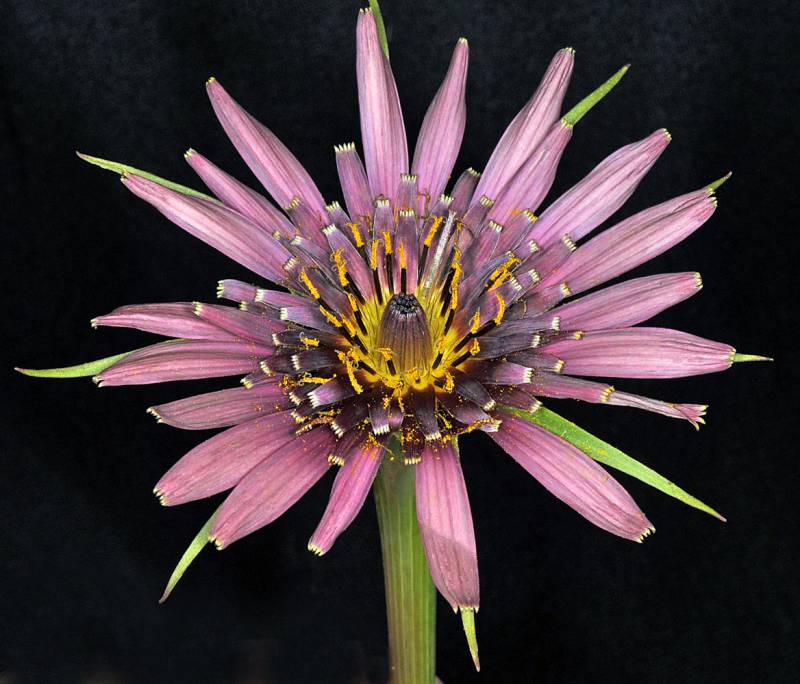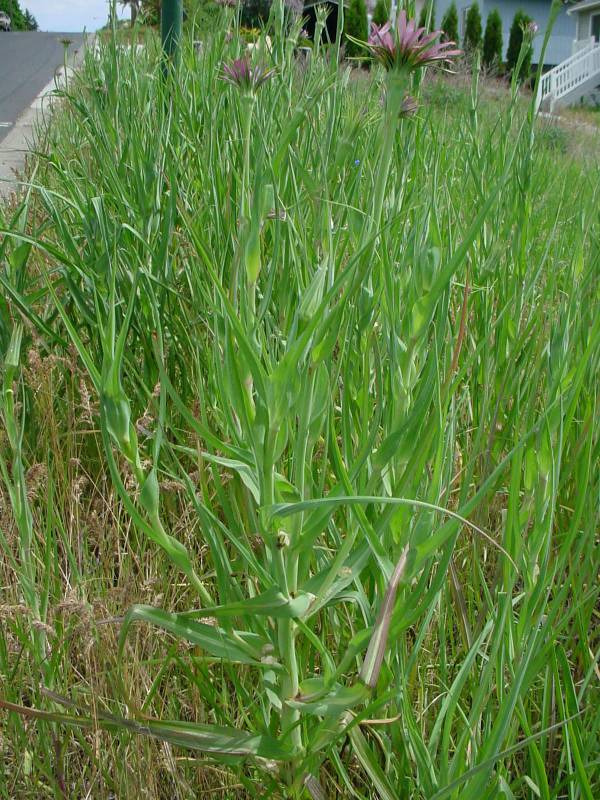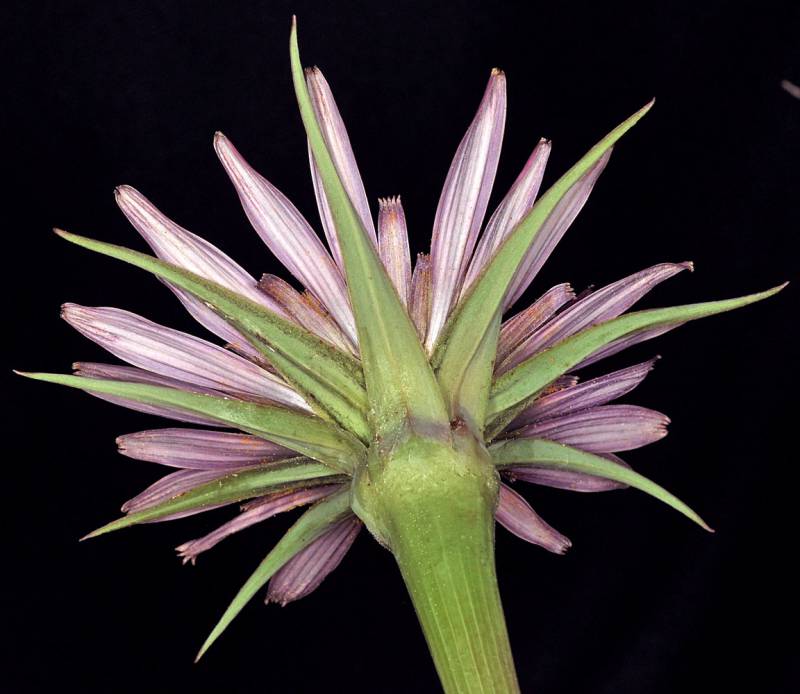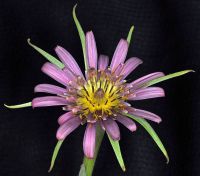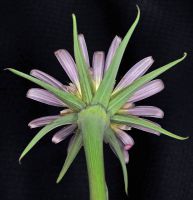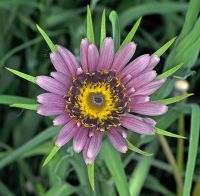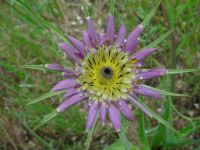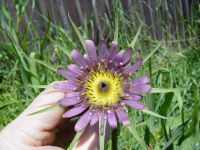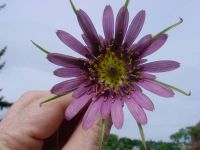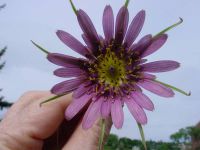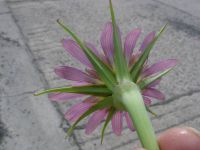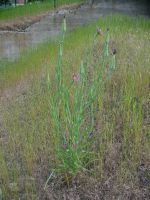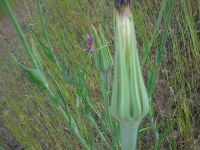Distribution: Occurring east of the Cascades crest in south-central and eastern Washington; eastern Washington and adjacent western Idaho, also occurring in Arizona.
Habitat: Dry, open areas in the foothills.
Flowers: May-June
Origin: Native
Growth Duration: Biennial
Conservation Status: Not of concern
Pollination: Bees, flies, beetles, wasps
Biennial or occasionally annual, the stem usually branched, 3-10 dm. tall, the juice milky.
Leaves elongate, uniformly tapering from base to apex, entire, not recurved, mostly glabrous but with some loose, wooly hairs in the axils.
Heads solitary at the ends of branches, the peduncles enlarged and hollow under the heads; involucral bracts in a single series, equal, broad at the base and tapering to a point, about 13, 2.5-4 cm. long in flower, barely surpassing the ligulate corollas, elongating to 4-7 cm. in fruit; ligules brownish-purple with a yellow base; pappus of a single series of whitish, uneven-length, plumose bristles, the plume branches interwebbed.
Achenes 2.5-4 cm. long, the body narrowed to the stout beak.
Publication: Amer. J. Bot. 37: 497. 1950.
PNW Herbaria: Specimen records of Tragopogon mirus in the Consortium of Pacific Northwest Herbaria database
WA Flora Checklist: Tragopogon mirus checklist entry
OregonFlora: Tragopogon mirus information
E-Flora BC: Tragopogon mirus atlas page
CalPhotos: Tragopogon mirus photos

